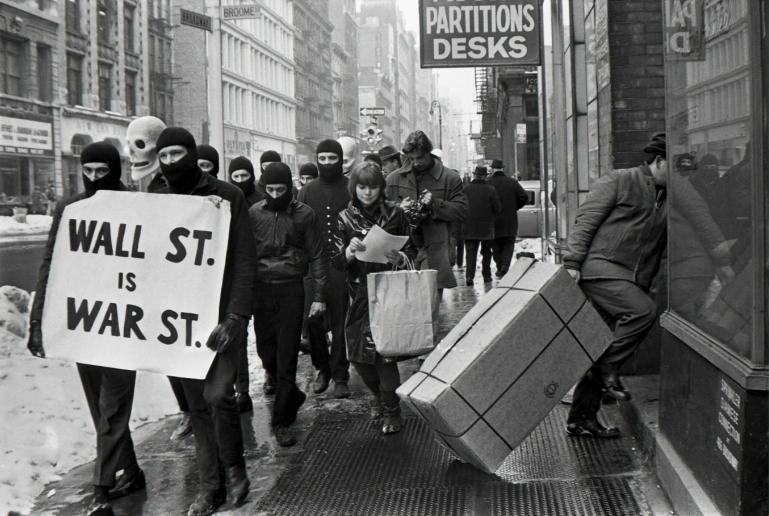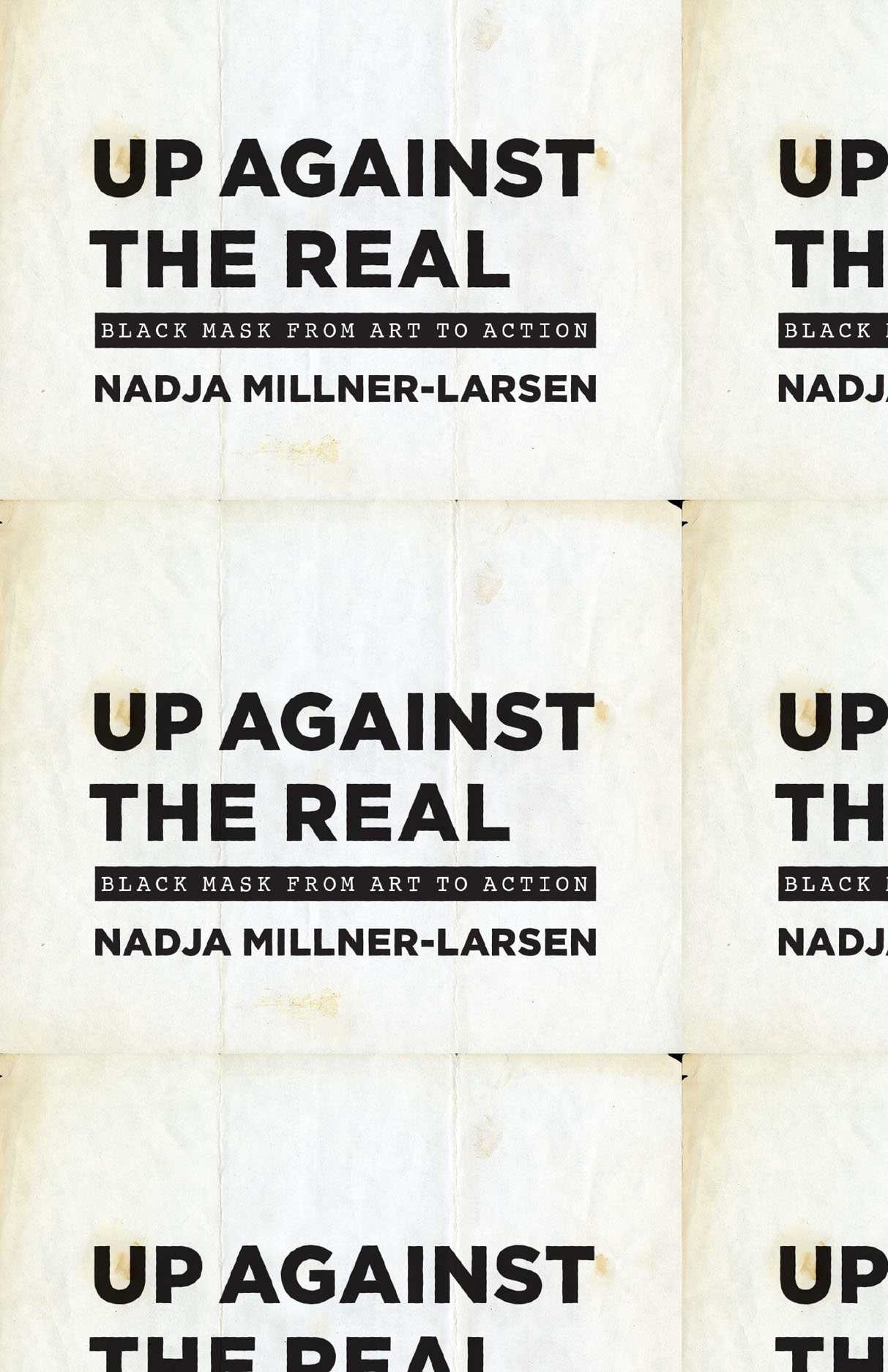
The art activists adopted tactics from Black liberation groups to shape their provocations during the 1960s
During the mid-1960s, the radical collective Black Mask cohered mainly around a broadsheet of the same name published in Downtown Manhattan. The publication, which emerged in late 1966 after attempting to shut down the Museum of Modern Art permanently, combined aesthetic and political debates with excerpts from Third World liberation-movement texts and miscellaneous inserts, such as letters from incarcerated political leaders. The eclectic construction of the broadsheet is echoed in Nadja Millner-Larsen’s recounting of Black Mask’s subversive relationship to New York’s postwar art scene in this first monograph on the group. Millner-Larsen reproduces examples of Black Mask alongside Abstract Expressionist paintings and images of expanded cinema events and political protests, mapping how the debates laid out in the broadsheet emerged in the ‘real’ world through Black Mask’s commitment to direct action.
Black Mask began as a rankled core of Dada-enthusiast artists. Their collective identity was forged through an adoption of tactics from Black liberation groups and a questioning of the relationship, as Millner-Larsen puts it, between revolutionary politics and radical aesthetics. Their politics were made explicit in the invocation of the black mask as a symbol of anonymity in the face of state surveillance. In 1968 the group changed its name to Up Against the Wall Motherfucker – and then to just ‘the Motherfuckers’ – in reference to a poem by Black Arts Movement agitator Amiri Baraka. The name-change also morphed the group’s purview: it exploded in membership, transforming into a largely anonymous collective of impoverished, racially diverse youth seeking counterculture.

Though Black Mask and UATWMF are remembered as a vigilante street gang, Millner-Larsen’s historically and materially grounded study specifies the ways in which the group’s commitment to direct action was rooted in an interest in the political and philosophical uses of aesthetics and abstraction, one that was maintained even after their edict to cease artmaking following their name change. Black Mask’s approach to the artistic discourses of the 1960s allows Millner-Larsen to theorise surprising material explanations for received histories of modernism: connecting points of reference as disparate as the art criticism of Michael Fried, the Watts Rebellion of 1965 in Los Angeles and the first English-language translations of Frantz Fanon into sites of possible, if not evocative, resonance. Through this, Millner-Larsen reveals a cracking up of modernism and the postwar artworld, one rooted less in shifts in critical or institutional discourse than in an unsettling of the presumed foundations of these histories.
Millner-Larsen insists that Black Mask’s ‘marginality’ is the engine for their politics. The real critical guiding-light in the book, however, is found in political and cultural radicals like Baraka and Fanon who gave language and shape to the antagonistic practices of the group, as Millner-Larsen illustrates in an entire chapter dedicated to the provocation and problematic that ideas around Blackness presented to the primarily white group. As Black Mask’s participation in the kaleidoscopic world of art-activism during the 1960s is so dense, many of Millner-Larsen’s engagements in theorising these activities verge on tangents, previewing possible roads to be explored that take away from honing in on the intimacies of a group whose incoherence was an integral part of their politics.
It is in this incoherence and in Black Mask’s first initial call to close MOMA that their legacy demands that we reconsider today’s disruptive politics against museums. Contemporary activists have transformed the museum into a platform for underlining global issues: from the gravely serious – like Strike MOMA’s condemnation of what they’ve identified as MOMA’s ‘blood-soaked modernity’ – to the memeified soup-throwing antics of Just Stop Oil. While many arts institutions have taken varied steps to reflect on these kinds of actions, a tight-lipped and internal reckoning has been the consistent response by most. Heeding Black Mask and UATWMF’s call for an antagonistic politics might reveal the true limits of current-day art institutions’ tolerance for insurgent calls for their abolishment and eventual obsolescence.
Up Against the Real: Black Mask from Art to Action by Nadja Millner-Larsen. University of Chicago Press, $35 (softcover)